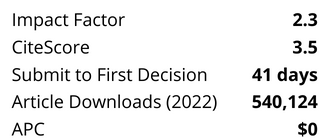This paper reviews estimates of the incidence and prevalence of acute gastrointestinal illness (AGI) from 33 studies. These studies include prospective cohort studies, retrospective cross-sectional population-based surveys, and intervention trials from the United States and six other developed countries published since 1953. The incidence and prevalence estimates for AGI reported in these studies range from 0.1 to 3.5 episodes per person-year. However, comparisons of these rates are problematic owing to significant variation in study design, sampling methodology, and case definitions and should be made with caution. In the United States, the Centers for Disease Control and Prevention's (CDC) Foodborne Diseases Active Surveillance Network (FoodNet) estimates a rate of 0.65 episodes of AGI per person-year. This estimate includes diarrhea and/or vomiting of infectious or non-infectious origin, with a measure of severity (impairment of daily activities or diarrhea duration greater than 1 day), and has been adjusted for combined respiratory–gastrointestinal illnesses. However, it excludes episodes of diarrhea or vomiting due to any long-lasting or chronic illness or condition. Limitations in study design result in an unknown degree of uncertainty around this point estimate.
Skip Nav Destination
Article navigation
Research Article|
December 01 2006
The rate of acute gastrointestinal illness in developed countries
Sharon L. Roy;
1Water and Environment Activity, Division of Parasitic Diseases, Centers for Disease Control and Prevention, 4770 Buford Highway, N.E., Mailstop F22, Atlanta, GA 30341-3724, USA
E-mail: str2@cdc.gov
Search for other works by this author on:
Elaine Scallan;
Elaine Scallan
2Foodborne Diseases Active Surveillance Network (FoodNet), Foodborne and Diarrheal Diseases Branch, Centers for Disease Control and Prevention, 1600 Clifton Road, Mailstop D63, Atlanta, GA 30333, USA
Search for other works by this author on:
Michael J. Beach
Michael J. Beach
1Water and Environment Activity, Division of Parasitic Diseases, Centers for Disease Control and Prevention, 4770 Buford Highway, N.E., Mailstop F22, Atlanta, GA 30341-3724, USA
Search for other works by this author on:
J Water Health (2006) 4 (S2): 31–69.
Citation
Sharon L. Roy, Elaine Scallan, Michael J. Beach; The rate of acute gastrointestinal illness in developed countries. J Water Health 1 December 2006; 4 (S2): 31–69. doi: https://doi.org/10.2166/wh.2006.017
Download citation file:





%20cropped.png?versionId=5950)